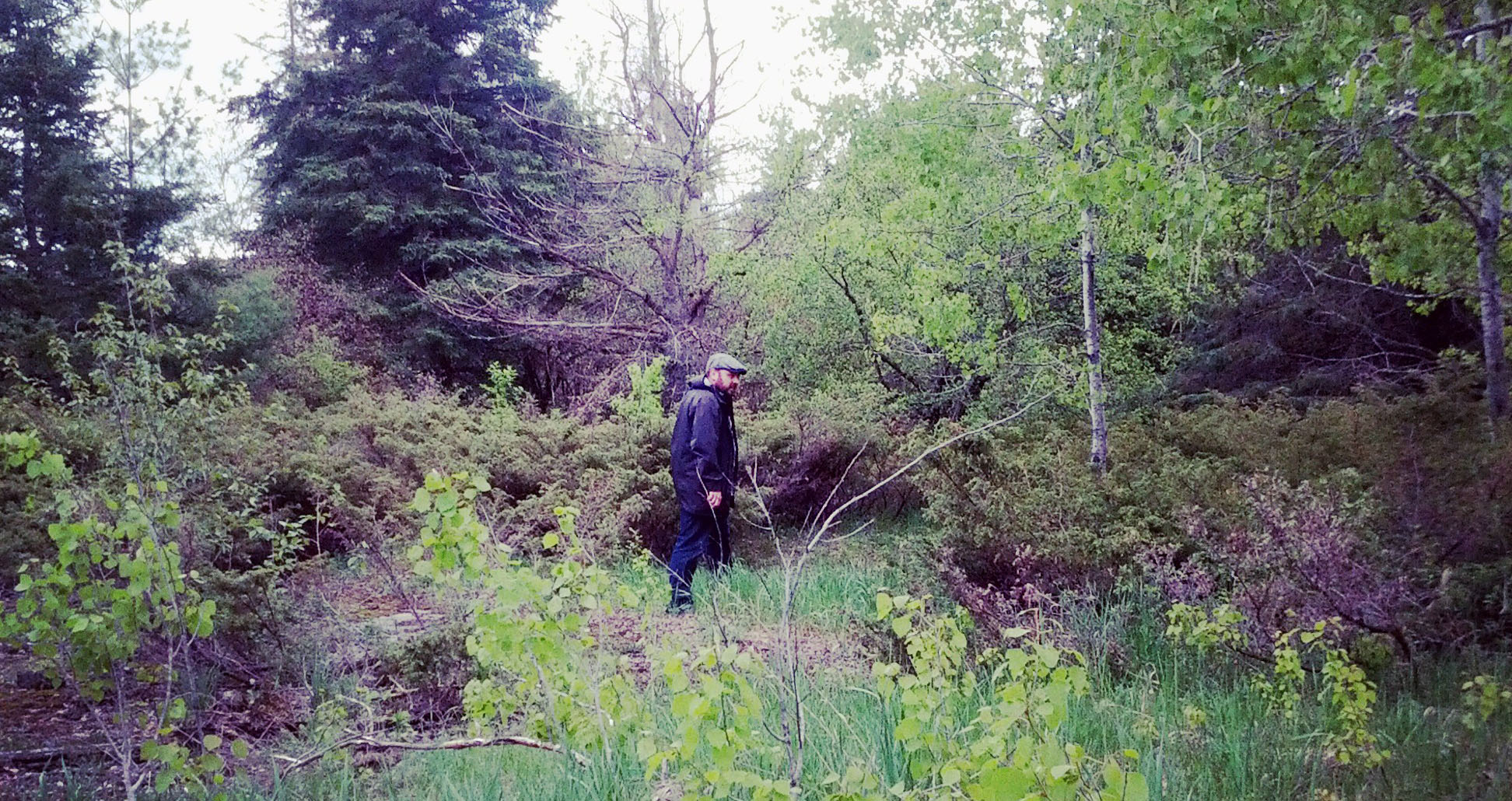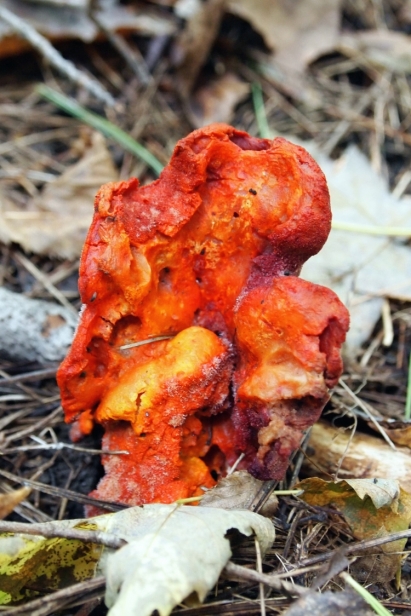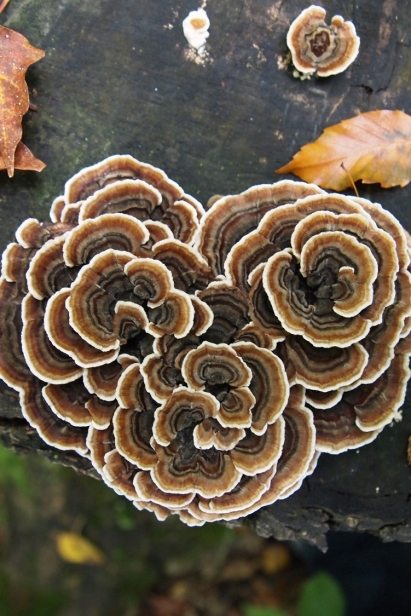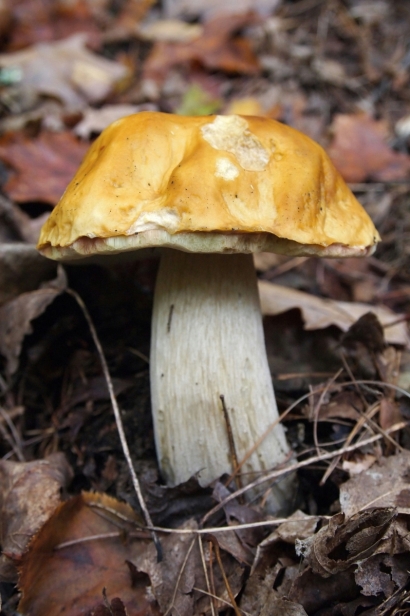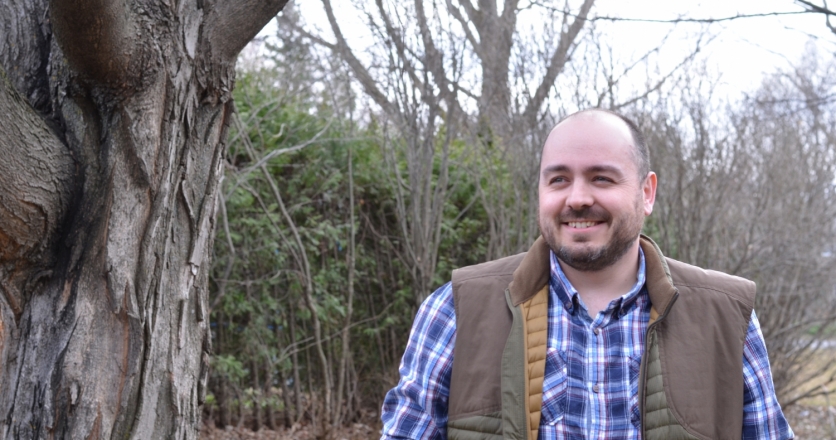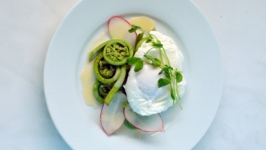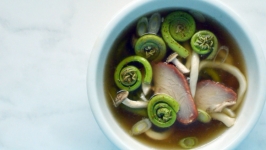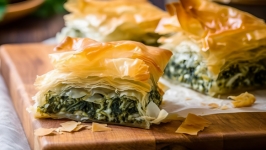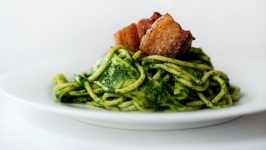Taking a Walk on the Wild Side
It’s not every day that nature walks in Ottawa draw the attention of distinguished chefs in Montreal, Toronto and even New York City. But then again, few hikers have the knowledge and discerning eye of Scott Perrie — otherwise known as ‘The Mushroom Man’ in Ottawa’s gastranome community. Perrie says it all started with a simple desire to get back into the great outdoors. “About seven years ago, I felt a little disconnected with nature,” he says. “I decided to challenge myself to go out and find food — and thought I’d try looking for some morel mushrooms.” In about an hour, Perrie had bagged a few pounds of morels — coveted by chefs and food lovers alike — from within the city limits. “It was totally mind-blowing,” recalls Perrie. “I was thinking, ‘Geez, I can’t believe I can do this right outside my door in Ottawa!’ I always thought you’d have to go into the deep woods somewhere.”
Not that deep woods are a problem for Perrie, considering his family hails from northern Ontario. “Culturally, things are quite a bit different there,” he explains. “As far back as I can remember, I picked wild blueberries; my father instilled in me the value of getting wood at a young age. He fished for walleye and hunted; moose would show up on our dinner table — or sometimes partridge. We would go canoeing and camping a lot.” With such an innate sense of familiarity and comfort with the outdoors, foraging is a natural extension for Perrie, who works as a manager with Statistics Canada by day. “It’s interesting that foraging has become so popular,” he muses. “To me, it’s really just a way of looking at nature and being in nature.”
It didn’t take long before Perrie’s foraging efforts were turning heads in Ottawa and beyond. When he posted photos of morels on Twitter and Instagram, chefs from near and far began to respond with enthusiasm. “Foraged ingredients really help restaurants differentiate themselves,” says Perrie. “These are things that some chefs get really curious about.”
One of his first local supporters was Mark Lepine, chef and owner of the celebrated restaurant Atelier — renowned for its innovative molecular gastronomy. Perrie says he approached Lepine because he sensed the rare morels would be of interest. “He thinks so creatively and he’s such a skilled chef — I thought he’d be totally into this,” says Perrie. “I walked in one day with a few pounds of morel mushrooms and his eyes just kind of popped; he was really excited about it.”
Perrie also began to supply Kyle Mortimer-Proulx — formerly of Zen Kitchen, currently at Lowertown Brewpub — with foraged morels. In Ottawa, some of the most creative local chefs enjoy showcasing “hyper-local” foods, says Perrie. “What I go out and find, you don’t normally find in the ByWard Market,” he adds.
In the spring of 2013, Perrie teamed up with Matthew Brearley — then chef/owner of Castlegarth Food Shop and Restaurant in White Lake — for a special foraged foods dinner series. Acting as the featured speaker for two evening events, Perrie had the chance to share his expertise with diners. “The general premise was to highlight available foraged spring ingredients,” he says of the dinner series. “I gave a little information on each dish and the ingredients that were foraged, how to prepare them, when and generally where to find them.” The innovative menu treated participants to dishes such as rabbit terrine with ox-eye daisy capers, pickled orpine, wild carrot and wild leek foam. There was also pickerel with a Dryad's Saddle mushroom broth, white bass roe, wild asparagus, fiddleheads and a morel tempura made with cattail flour. Dessert consisted of a lilac sorbet — a wild plum blossom ice cream with elderflower mousse and creeping charlie flower shortbread, garnished with wild violets. Castlegarth has since closed and Brearley has taken up the reins at the Two Rivers Food Hub in Smiths Falls.
Perrie also had the opportunity to contribute foraged reindeer moss to a dish prepared by Chef Marysol Foucault at the prestigious Gold Medal Plates competition in Ottawa in 2013. Chef Foucault was the unanimous first-place choice of the judges, winning gold with a dish of cured wild boar and rabbit pressé, brown butter rabbit liver mouse, chestnut, parsnip, Sortilège lichen and golden beet. The lichens were fried with Sortilège (Québec whisky with maple syrup). “It was a unique, super-Canadian dish,” says Perrie of Chef Foucault’s creation. “You can’t get much more wild than eating lichens.”
As Perrie’s passion for foraging grew, he started keeping detailed records of morel mushroom growth — a practice called phenology. “I keep a record of what I found and where I found it — and note the condition and the abundance of it,” says Perrie. “Morel mushrooms are very seasonally specific; you have to be really dialed in with the season and the weather. You have to know where the habitat is to find them.” The diligent record-keeper only needs to bide his time a bit longer before spring brings a new foraging season back to the nation’s capital. “The season starts in late April or early May — that’s when ramps,fiddleheads and morels are coming in,” enthuses Perrie. “When I look at my records, it’s almost like clockwork; I can nearly guarantee mushrooms will be growing the first week of May.” For the avid forager, it’s truly the best time of the year. “It’s like the starter’s pistol has gone off, signalling the start of a new crop,” says Perrie. “By spring, chefs are just done with cooking root vegetables — the taste of spring is so inspiring.”
As for words of advice for would-be, inexperienced foragers, Perrie suggests starting slow – and getting well educated before putting mushroom to mouth. “There are so many mushrooms and berries that have toxic twins that can be poisonous,” he cautions. “Deciphering can be difficult — you need to really have a trained eye, to know what you’re looking for and what the key identifiers are. “Your standard button mushroom looks very much like a poisonous mushroom that grows wild — and that’s terrifying to me.” Begin by getting your hands on some really good documentation, connecting with an experienced forager or joining an amateur mycology group such as ‘Les mycologues amateurs de l’Outaouais’ (mao-qc.ca) in Gatineau, adds Perrie.
While he gets many requests to give guided foraging tours, Perrie is reluctant to expose Ottawa’s ecology to larger groups. “From an environmental aspect, it’s hard to instill the ethic of a good forager; I ensure I get repeat growth and sustainable growth year after year,” says Perrie. “A really good forager knows that you don’t take everything; you can’t do that — you have to leave some behind so there’s enough spores. “If other people don’t have the same practices, it can damage the eco-system and the habitat; it can impact animal health and plant health.“
In fact, Perrie is so passionate about sustainable growth that he won March’s Awesome Ottawa award (awesomeottawa.ca) in support of a mushroom inoculation project. Cleverly dubbed ‘Fungus Among Us’, Perrie’s project will be a bit like a wild mushroom Easter egg hunt. “I will inoculate recently dead trees and tree stumps with edible oyster, hen-of-the-woods and lion's mane mushroom plug spawn across Ottawa and the Ottawa Valley, and record the locations,” explains Perrie, who plans to report on the locations through social media as the mushrooms grow. “Once mushrooms have fruited from the logs, I will tweet out the locations and hope to do some quick, pop-up foraging lessons onhow to identify these types of mushrooms,” he adds.
While Perrie is not recommending that people should harvest, handle or consume any wild mushrooms on their own without consultation with an expert, he hopes the project will expand our city’s horizons with respect to how we use community spaces, approach gardening and other homegrown food projects. “Perhaps this will help us rethink how we use fallen timber before it ends up in a wood chipper or firewood pile — maximize the food growing potential before it becomes fuel,” says Perrie. “Many inoculated logs can grow mushrooms for a few years, so this project is one that will keep on giving!”
Valley Wild Edibles
facebook.com/valleyedibles


